Saku Toji Experience
Join Kurabito Stay for this new 3-day, 2-night program, where you go beyond the kurabito experience and step into the world of the toji (lead brewer).
The toji bears ultimate responsibility for sake brewing, and there is only one in each brewery. The people working under the toji to make sake are the kurabito (brewery workers). The toji is responsible not only for the production and quality of the sake, but also for managing the kurabito. The role requires long years of experience, an impressive wealth of skill, and a deep understanding of the process and the environment in the sake brewery. The toji has to look after the daily work schedule, the people, and that’s just the beginning. They also monitor numerical values from the moromi (main ferment) to see how fermentation is progressing. Daily measurement and analysis help the toji understand and manage the microorganisms responsible for fermentation.
This KURABITO STAY program is only open to people who have already taken part in our standard Kurabito Experience, as it builds on what you learnt in that program in order to deepen your knowledge and appreciation of sake. You also get to enjoy dinner with Osawa-toji from Osawa Shuzo, makers of Meikyo Shisui! Taste and compare the brewery’s sake while their own toji explains the differences between them, and get a finer appreciation for Osawa Shuzo as you understand more about the work of the toji. On the second day, observe the moromi at different stages as the kuramoto (brewery owner) and toji talk you through the process of managing the ferment, a unique opportunity for Q&A and developing your understanding of sake making. The Saku breweries taking part in the Saku Toji Experience are Kurosawa Shuzo, experts in kimoto, and Tsuchiya Shuzoten, makers of refined modern sake.
In the normal KURABITO STAY program, you wash and steam the rice, take it into the koji room, and inoculate it with koji spores – now you can experience what happens next (breaking up the rice and managing the temperature and growth of the koji) in the Kitsukura Shuzo koji room.
You don’t need any qualifications or sake certifications to take part in this program, or any proven ability to taste sake. The aim of this program is to help you understand the role of the toji in order to increase your appreciation of sake. Step into the shoes of the toji whose work is the beating heart of the Saku sake brewing area, experience every part of sake production before it leaves the brewery as a final product, and dive into a new and more complete appreciation of sake.
Language
Japanese, English
Minimum number of participants
4
*The program may be cancelled if less than 4 participants sign up. Please be aware that the ability to hold a program like this one depends on the state of coronavirus infection in the country, so there is a possibility of cancellation at short notice.
Dates
FIRST term:Friday February 23th – Sunday February 25th, 2024【Carry out】
SECOND term:Friday March 8th – Sunday March 10th, 2024【Carry out】
3 days and 2 nights
limited to 8-10 participants (8 rooms)
6 single rooms, 2 double rooms
*When applying for 2 people, please state if you want one double room or two single rooms. If no preference is stated, we will contact you by email to confirm.
Price
3 days and 2 nights with 5 meals (2 breakfasts, 1 lunch, 2 dinners)
Per person
JPY 99,800 (tax included)
*All participants must be over 20 for safety reasons, and because alcohol is served as part of the program.
Kurabito Experience (breaking up the rice and managing the temperature and growth of the koji), Saku Toji Experience (observing the management of the main ferment)
Gifts
・KURABITO STAY original tenugui cloth
・Authentic ceramic kikichoko sake cup used for the dinner and discussion and the tasting
*The vivid ja-no-me concentric circles are hand painted by an artisan. This is the style of cup used by toji.
*Decorated with the KURABITO STAY logo.
6 x 720 ml bottles of sake
(6 bottles carefully selected by KURABITO STAY, made from the moromi you see during the program, 3 from Kurosawa Shuzo and 3 from Tsuchida Shuzoten. *Can only be delivered to addresses in Japan. If some of the sake are seasonal releases, there may be 2 deliveries of 3 bottles each.)
・Certificate of completion from the kuramoto for the Saku Toji Experience.
・KURABITO STAY Ambassador business cards.
Special benefits
・All the photos taken during the program available for unrestricted download! (For safety and hygiene reasons, no devices are allowed during the Kurabito Experience or Toji Experience. KURABITO STAY staff will take all the photos you could want.)
Included in the program price:
Kurabito Experience fee, Toji Experience fee, rental of boots and original work uniform used during the program, sake lecture fees (including materials), accommodation fees (2 nights), sake server fee, breakfast on day 2 and 3, dinner on day 1 and 2 (including sake), lunch on day 3, Saku Toji Experience certificate, business card production fee, photography fees, bus rental, sake (6 x 720 ml bottles), postage and packing, insurance
\ Saku sake on tap during your stay! /
You’ll find the first ever sake server in Nagano Prefecture on the ground floor of the KURABITO STAY building. It’s stocked with limited edition sake from Kitsukura Shuzo (not available for sale) and seasonal sake from the Saku area, all for participants to enjoy during their stay. So relax and try the local sake to your heart’s content!

Schedule
=== Day 1 ===
Arrive at KURABITO STAY before 17:00 (check-in opens from 15:00)
17:00–17:45 Orientation
18:00 – Dinner (hosted by Tyler Ide, 19th generation owner of Kitsukura Shuzo) in the KURABITO STAY lounge
Welcome back to Saku, to Kitsukura Shuzo, and to KURABITO STAY! Kanpai to our reunion!
・Special Kurabito Experience menu (dishes made with koji that also pair well with sake, produced and selected by natura Asamakoji)
・13 sake from Saku (1 fresh sake from each brewery in the area!) to taste and compare
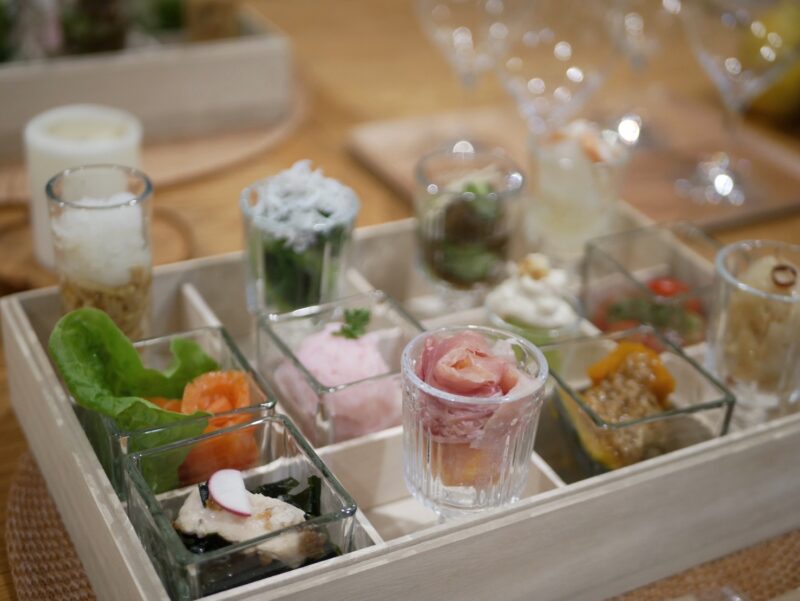 Selection of koji dishes
Selection of koji dishes
Menu includes: smoked Shinshu salmon, turnip and shrimp cooked with shio-koji, deep-fried bites with shoyu-koji, black koji fresh cheese… and more, showing you the many ways koji can be used to produce healthy fermented food. Served with rice and soup.
Stay up as long as you like, then sleep soundly in your room to prepare for the next day.
=== Day 2 ===
7:00 – 7:30 Enjoy a healthy kurabito breakfast together
8:00 – 8:15 Purification ritual
8:30 – 9:30 Kurabito Experience: first mixing of the rice to manage koji temperature and growth, in the koji room
The steamed rice forms clumps as the koji grows. The rice needs to be broken up so the heat can dissipate. Then it is mounded up again and covered with cloth.
9:30 – 10:30 Kurabito Experience: sorting koji or building the main ferment 
10:45 – 11:15 Break
11:15 – 12:00 Tasting workshop

This workshop is based on the Tsuchida 99 STUDY (Tsuchida Shuzo) series of 5 sake made with koji grown for 5 different time periods: 29 hours, 37 hours, 41 hours, 45 hours, and 49 hours. Tasing and comparing the bottles in this special series lets you eliminate other factors, like yeast strain or polishing ratio, and focus on how koji growing time affects flavor.
12:00 – 15:00 Free time
Enjoy lunch wherever you want.
We recommend one of the KURABITO FRIENDLY SHOP restaurants in Saku town!
15:00 – 16:00 Kurabito Experience: second mixing of the rice to manage koji temperature and growth, in the koji room
After mounding the rice, the temperature increases again over time as the koji grows. The rice clumps together due to the growth of the koji and must be broken up again to prevent the temperature rising too high, then it is spread out evenly over a larger area. Spreading the rice out allows heat and moisture to dissipate, and the koji grows over a larger surface area as it comes in contact with oxygen. The rice is then covered with cloth again, and left to allow the temperature to rise.
16:00 – 17:00 Surprise special lecture 1
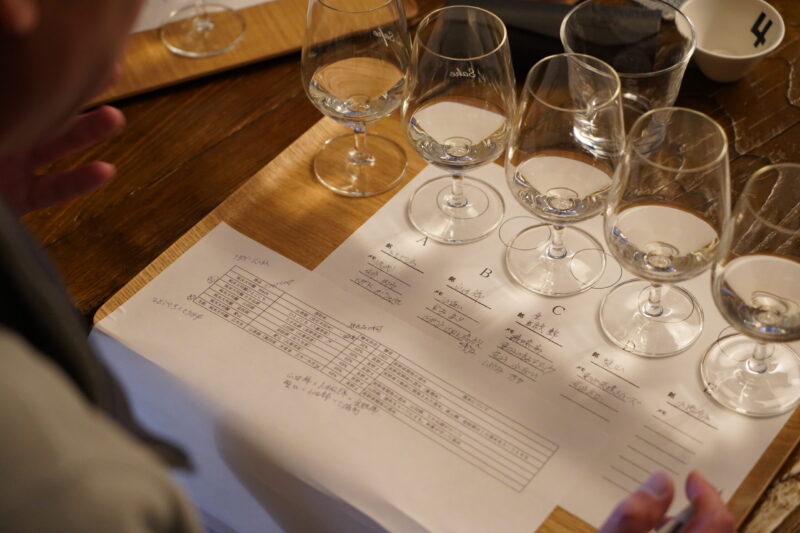
17:00 – 18:00 Break
18:00 – 18:30 Kurabito Experience: final mixing of rice, in the koji room

5-7 hours after the second mixing, the koji is growing into the rice and the process is almost complete. As the enzyme amylase (which breaks carbohydrate down into sugar) becomes most active from temperatures just over 40°C, the rice is mixed again when the temperature reaches around 38.5°C to even out any hot or cold areas and release excess moisture before the fermentation process generates even more heat.
19:00 – Dinner hosted by special guest Osawa-toji from Osawa Shuzo, at KURABITO STAY
・Menu selected to go with sake from Osawa Shuzo
・Taste and compare 5 sake from Osawa Shuzo, including their main brands “Meikyo Shisui” and “Seki”… and maybe some special secret sake?!
Oryori Lemon Dinner BOX
Owned and operated by a talented chef who trained in Japanese cuisine in Ginza and Roppongi restaurants, Oryori Lemon makes full use of abundant, high-quality local ingredients such as Shinshu salmon, prunes and Saku carp. Enjoy the flavors of local produce skillfully transformed into delicious Japanese cuisine, alongside seasonal sake from Kitsukura Shuzo.
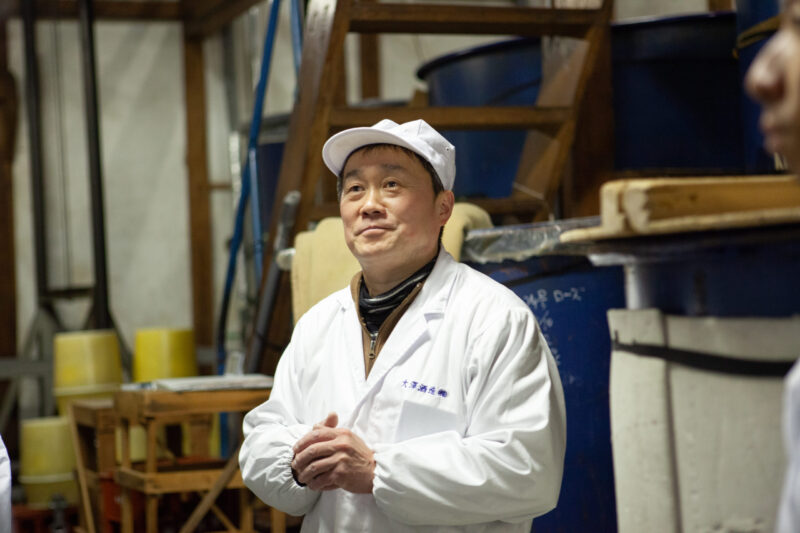
Osawa-toji, an in-demand mentor for kurabito all over the country
Stay up as long as you like, then sleep soundly in your room to prepare for the next day.
=== Day 3 ===
7:30 – 8:30 Enjoy a healthy kurabito breakfast together
9:00 – 9:45 Kurabito Experience: Taking the finished koji out of the koji room
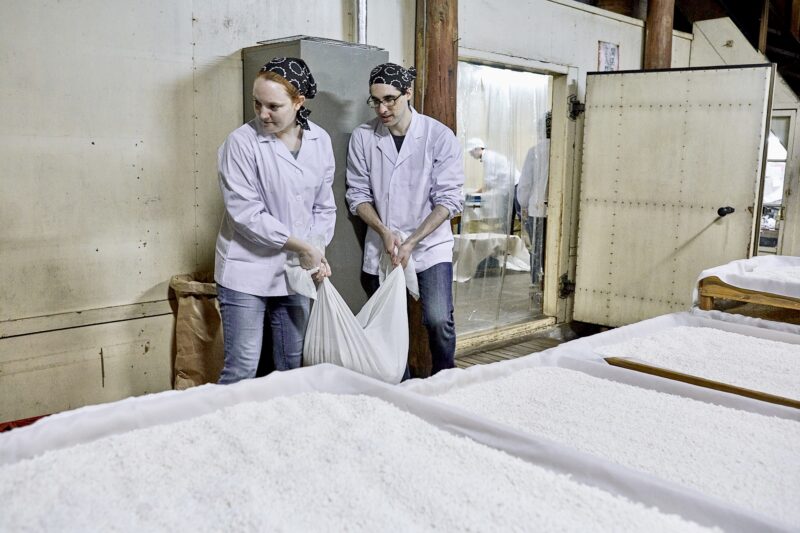
Now that the koji is complete, it is taken out of the koji room to cool down and dry.
10:00 – 11:00 Surprise special lecture 2

11:00 – 11:30 Break, prepare for checkout
11:30 – 12:20 Lunch (soba from Tomosen, eaten in the KURABITO STAY lounge.)
12:30 Leave KURABITO STAY
| (30 minutes by chartered bus)
13:00 – 15:00 Saku Toji Experience at Kurosawa Shuzo

See how the moromi is managed
Observe the progress of fermentation in 5-6 moromi at different stages, including appearance, how much the rice has broken down, taste, aroma and foam. The kuramoto and toji will explain each factor and how they are analyzed.
| (30 minutes by chartered bus)
15:30 – 17:30 Saku Toji Experience at Tsuchida Shuzoten
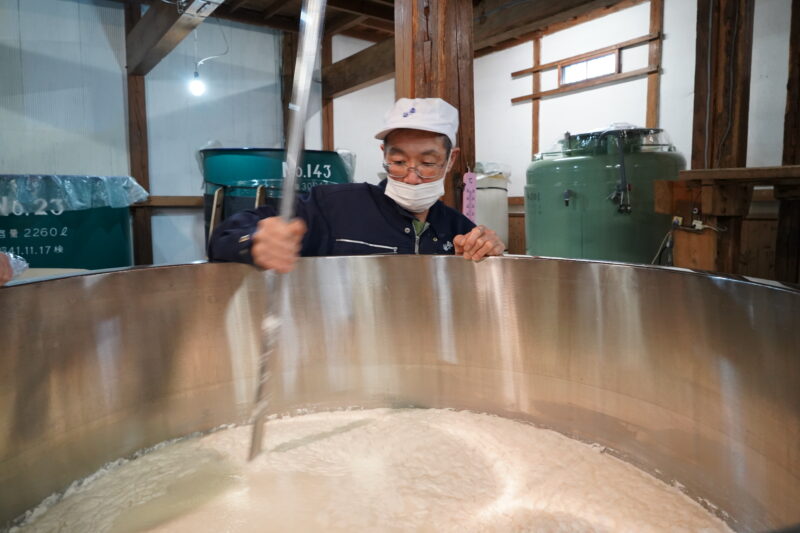
See how the moromi is managed
Observe the progress of fermentation in 5-6 moromi at different stages, including appearance, how much the rice has broken down, taste, aroma and foam. The kuramoto and toji will explain each factor and how they are analyzed.
| (20 minutes by chartered bus)
Around 18:00 arrive at Saku Station, Asamaguchi side, program ends
RESERVE HERE
Please feel free to contact use with any questions.
Experience planned and executed by KURABITO STAY, 623-2 Usuda, Saku City, Nagano Prefecture, Japan
Nagano Prefectural Government Registered Tourism Area #622
Enquiries: call +81 90 9354 8328 (Tazawa)
Email: info@kurabitostay.com